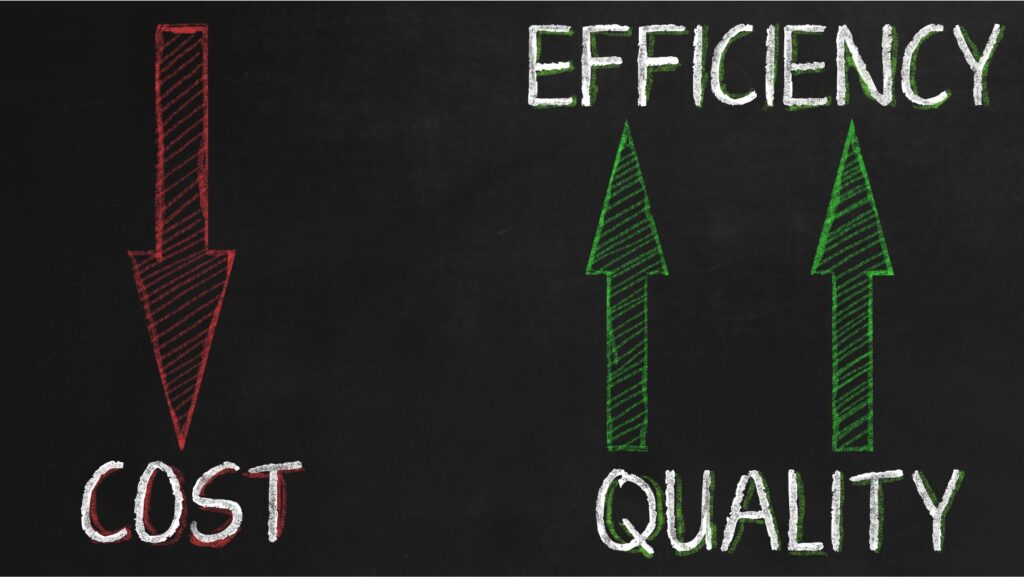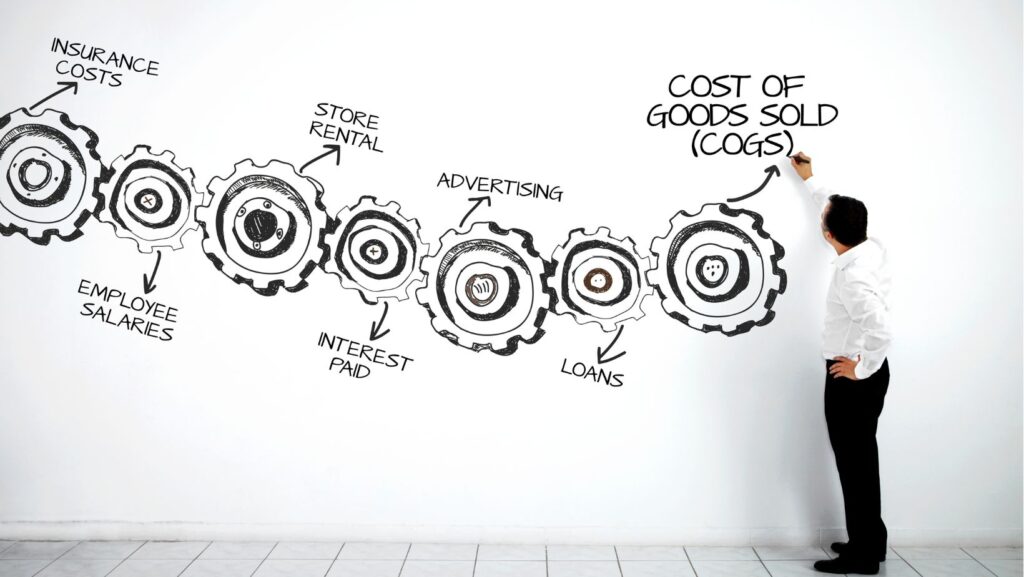Mastering Cost Leadership: 11 Keys to Business Success

What is Cost Leadership?
A company that pursues cost leadership as a business strategy can offer goods or services at a lower cost than its rivals since it will be the lowest-cost producer in its sector.
This competitive advantage can assist a business in increasing its markethttps://magnuron.com/content-marketing-strategy-small-business share, increasing its profitability, and surviving economic downturns.
Companies are always looking for ways to outdo their competitors. Cost leadership is one tactic that has shown itself to be quite successful.
Cost leaders can offer goods and services at cheaper rates than their rivals by keeping the lowest costs of production and delivery. This helps them get a bigger market share and increase their profitability.
We will examine the idea of cost leadership, as well as its advantages, techniques for execution, potential difficulties, and examples of successful cost leaders in the real world.
Understanding Cost Leadership
The idea of cost leadership is not new. Businesses have historically sought ways to lower expenses while maintaining a competitive price point for their goods and services. Henry Ford revolutionized the automobile business in the early 20th century by creating the assembly line production technique, which significantly decreased the cost of making cars and made them more accessible to a wider market.
Michael Porter’s 1980 book “Competitive Strategy: Techniques for Analyzing Industries and Competitors” helped popularize the modern concept of cost leadership.
One of the three generic tactics that companies might use to gain a competitive edge, according to Porter, is cost leadership.
Since then, the idea has changed, and businesses have been producing novel ways to cut expenses and beat the competition.
Core Principles of Cost Leadership

Economies of scale: Economies of scale are the cost benefits that a company achieves by increasing its production. The average cost per unit falls as manufacturing volume rises, resulting in lower pricing for customers. This can be accomplished by making investments in innovative technology, buying raw materials in bulk, and streamlining processes.
Economies of scope: Economies of scope occur when a business may lower costs by manufacturing a variety of goods or providing a selection of services while using the same resources. Sharing distribution networks, marketing initiatives, and managerial resources across several product lines or services might accomplish this.
Efficient use of resources: To keep costs down, cost leaders concentrate on using their resources effectively, reducing waste, and improving processes. Lean manufacturing techniques, good supply chain management, and continuous improvement programs can all help with this.
Benefits of Cost Leadership
Cost leaders can offer their goods and services at reduced costs while still keeping strong profit margins by having the lowest cost structure.
As a result, they are able to outperform rivals with greater cost structures in terms of profitability.
A cost leadership strategy enables a business to be more competitive by providing lower pricing or greater value at a comparable price to rivals. Gaining market share and luring price-conscious customers can both be aided by this.
Due to their competitive pricing, cost leaders frequently have a larger market share, which can result in better sales volumes and more brand awareness.
Customers tend to appreciate companies that offer high-quality products and services at lower prices, leading to increased customer satisfaction and loyalty.
Times of economic uncertainty or recession, cost leaders are better positioned to weather the storm due to their lower cost structure, enabling them to continue offering competitive prices and maintaining market share.
Identifying areas of cost reduction

Manufacturing and production
Optimizing their manufacturing and production processes, businesses can become cost leaders.
This can entail making investments in innovative technology, applying lean manufacturing practices, and enhancing processes to cut waste and inefficiencies.
Supply chain management
Enhancing inventory, transportation, and procurement, effective supply chain management can significantly cut costs.
Companies can cut costs by negotiating better terms with suppliers, grouping shipments, and putting just-in-time inventory systems in place to reduce the cost of warehousing.
Marketing and distribution
Cost leaders can also cut expenses by optimizing their marketing and distribution plans.
Utilizing digital marketing channels, which can be more affordable than conventional advertising techniques, or streamlining distribution networks to reduce shipping and logistics costs are two examples of how to do this.
Leveraging technology for cost optimization
Automation and robotics
Automation and robotics investments can drastically save labor costs and increase productivity.
Companies can improve productivity and lessen the risk of errors, which will result in cheaper manufacturing costs, by automating repetitive jobs and using robots for precise work.
Artificial intelligence and data analytics
Businesses may spot patterns, trends, and inefficiencies in their operations with the aid of artificial intelligence (AI) and data analytics, allowing them to make data-driven decisions to reduce costs. Businesses can forecast demand, adjust pricing tactics, and better allocate resources by utilizing AI.
Digital marketing and e-commerce
Digital marketing channels, such as social media, search engine optimization (SEO), and email marketing, can be more cost-effective than traditional advertising methods.
E-commerce platforms allow companies to reach a wider audience at a lower cost than brick-and-mortar stores.
Continuous improvement and innovation
Businesses can use the Kaizen and lean approaches to promote a continuous improvement culture.
The purpose of lowering costs and enhancing overall performance, these practices concentrate on removing waste, streamlining procedures, and maximizing efficiency.
Employees can be encouraged to provide suggestions for cost optimization and reduction by encouraging a culture of cost consciousness inside the company.
This will help them understand the significance of cost management.
Employees buy-in and dedication to the company’s cost leadership objectives can be increased by involving them in cost reduction projects.
Organizations may access a plethora of information and expertise to fuel cost-saving solutions by seeking feedback and suggestions from employees at all levels.
Challenges and Risks of Cost Leadership

Balancing cost reduction with quality maintenance
While pursuing cost leadership, companies must ensure that they do not compromise on the quality of their products or services.
Striking the right balance between cost reduction and quality maintenance is crucial for maintaining customer satisfaction and long-term success.
Avoiding price wars
Aggressively lowering prices to maintain cost leadership can sometimes lead to price wars with competitors, which can hurt profitability. Companies must carefully consider their pricing strategies to avoid getting caught in a race to the bottom.
Adapting to changing market dynamics
Cost leaders must remain agile and responsive to changing market conditions, as new competitors, technologies, and trends can quickly erode their cost advantage.
Continuous innovation and adaptation are key to maintaining a cost leadership position in a dynamic business environment.
Navigating regulatory and ethical concerns
Companies pursuing cost leadership must ensure that their cost reduction strategies comply with all relevant regulations and ethical standards.
Failure to do so can result in legal penalties, damage to the company’s reputation, and loss of customer trust.
Real-world Examples of Successful Cost Leaders
Walmart
A successful cost leader is Walmart. The biggest retailer in the world.
With the help of effective supply chain management, bulk purchasing, and economies of scale, the company’s “Everyday Low Prices” approach enables Walmart to provide cheaper prices than its rivals while retaining a commanding market share.
Amazon
Amazon has become a cost leader in the e-commerce industry by effectively leveraging technology, innovation, and effective supply chain management. The company has been able to improve its cost structure, provide competitive prices to customers, and still generate strong profit margins because of its investments in automation, AI, and data analytics.
IKEA
The largest furniture retailer in the world, IKEA, has based its business strategy on cost leadership.
IKEA can lower shipping and storage costs by providing flat-packed, self-assembly furniture, passing these savings on to customers.
The business also places a strong emphasis on effective supply chain management and production, which helps it to keep overhead low and provide high-quality goods at competitive pricing.
Final Thoughts
Businesses wanting to acquire a competitive edge in today’s market, cost leadership is a potent tactic.
Companies can lower their costs and provide competitive prices to customers by concentrating on economies of scale, economies of scope, and effective resource utilization.
Increased profitability, stronger competitiveness, a larger market share, higher customer satisfaction, and resistance to economic downturns are all advantages of cost leadership.
Putting cost leadership plans into practice calls for the ability to react to shifting market dynamics, overcome legal and ethical issues, and strike a careful balance between cost reduction and quality maintenance.
Businesses may create their own cost leadership strategy and set the road for long-term success by taking inspiration from the real-world examples of profitable cost leaders like Walmart, Amazon, and IKEA.
FAQ
Q: What is cost leadership?
A: A company that pursues cost leadership as a business strategy can offer goods or services at a lower cost than its rivals since it will be the lowest-cost producer in its sector. This competitive edge can aid a business in gaining a larger market share, increasing profitability, and withstanding downturns in the economy.
Q: What are the core principles of cost leadership?
A: Economies of scale, economies of scope, and effective resource usage are among the fundamental tenets of cost leadership. Companies can become cost leaders in their respective industries by increasing output, creating numerous products or services using shared resources, and improving processes to reduce waste and inefficiencies.
Q: What are the benefits of cost leadership?
A: Increased profitability, stronger competitiveness, a larger market share, higher customer satisfaction, and resistance to economic downturns are all advantages of cost leadership. Maintaining a low cost structure enables businesses to offer competitive pricing, draw in more clients, and increase sales volumes and financial success.
Q: How can a company implement cost leadership strategies?
A: Identifying opportunities for cost reduction, utilizing technology for cost optimization, and promoting a culture of continuous improvement and innovation, businesses can execute cost leadership methods. In order to do this, it may be necessary to optimize supply chain management, streamline manufacturing and production processes, use digital marketing and e-commerce, and implement lean approaches like Kaizen.
Q: What are the challenges and risks associated with cost leadership?
A: The difficulties and hazards of cost leadership include juggling quality preservation with cost reduction, avoiding price wars, adjusting to shifting market dynamics, and overcoming ethical and legal issues. Companies aiming for cost leadership must maintain their flexibility, responsiveness, and dedication to upholding quality standards while cutting expenses.
Q: How does cost leadership contribute to long-term business success?
A: Cost leadership enables businesses to offer competitive prices, draw in price-sensitive clients, and maintain good profit margins, all of which contribute to long-term business success. Increased market share, improved brand recognition, and increased resilience during downturns in the economy can result from this, ensuring continued growth and profitability.
Bio:

Ronnie Patterson
Ronnie Patterson, founder of MagnÜron, is a multifaceted entrepreneur with a diverse background in music, electronics engineering, and engineering management. Drawing on experience across various industries, He offers expertise in SEO, operations, and strategy to help businesses thrive. Possessing a unique perspective and unwavering commitment to collaboration, and ideal partner for growth and success.






